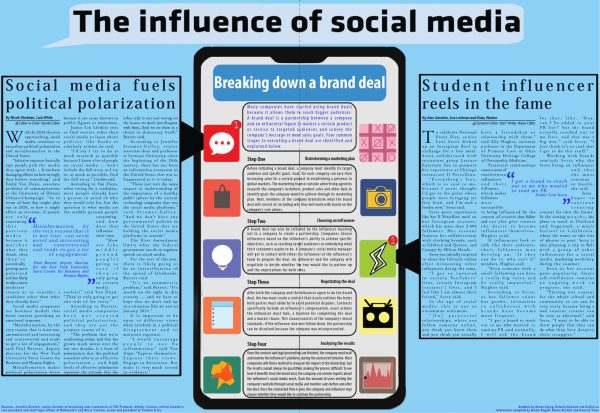Community resists sugary temptations
Baking is a frequent hobby of junior Morgan Barlin, but while she likes to share her baked goods with others, she seldom eats the treats that she makes due to their high sugar content.
“Sugar for me is in the form of fruits [and] vegetables … so I usually just don’t eat any desserts,” Barlin said.
Barlin, along with other students, has become increasingly aware of added sugars in recipes and prepackaged foods.
In the interests of her health, senior Ally Rosenbaum said she is very conscious of what foods she eats.
“I’m a type one diabetic, so I have to count my [carbohydrates, but] I don’t really keep a [written] log,” said Rosenbaum. “It’s more about eating foods that help sustain my blood sugars.”
Rosenbaum said she values knowing what ingredients are in prepackaged foods before consuming them. She has memorized many nutrition labels so she can decide if an option is healthy for her to eat.
According to clinical nutritionist Marcy Kirshenbaum, nutrition labels can be beneficial for consumers who want to become cognizant of possible toxins and unnatural additives, such as artificial sugars and sweeteners, that may be in processed products. “Hidden sugars” are often found in processed foods under the guise of chemical labels. These foods are often still advertised as healthy options in stores, claiming to be low-fat or gluten-free.
“If you see sugar as the first ingredient, it’s too much sugar,” said Kirshenbaum. “If you start reading things about artificial flavors and colors or preservatives, those are all just chemicals that your body doesn’t know what to do with, and we process it and try to get it out of our systems.”
Kirshenbaum said people can begin to limit sugar intake by removing sweetened drinks from their diets and introducing more fruits, vegetables and proteins from quality sources. As a result, general hunger decreases, leaving less room for processed foods.
As of Aug. 1, 2017, the Cook County Department of Revenue has put in place the Sweetened Beverage Tax, in part to limit sugar consumption from sodas, sports drinks and unnatural juices, according to the Sweetened Beverage Tax ordinance. The tax, stimulated by organizations such as the American Heart Association and American Diabetes Association, among others, aims to curb obesity and other serious health concerns. This tax charges sugary beverages at an additional one cent per ounce. Several district council members did not return phone calls seeking comment on the tax.
According to Kirshenbaum, in addition to cutting out sweetened drinks and artificially flavored foods, people should take time to find foods that are produced naturally and are less manufactured, resulting in less added sugar.
“You need to look for foods with real ingredients, things that you recognize,” said Kirshenbaum. “Natural food is everywhere. You really have to educate [yourself] and think about what’s real food.”
By limiting her added sugar intake and favoring natural ingredients, Barlin said she sees a noticeable difference in her mood and behavior.
“[I try to be healthy] to stay fit and to feel good,” said Barlin. “When I eat badly I can’t sustain myself throughout the day.”




